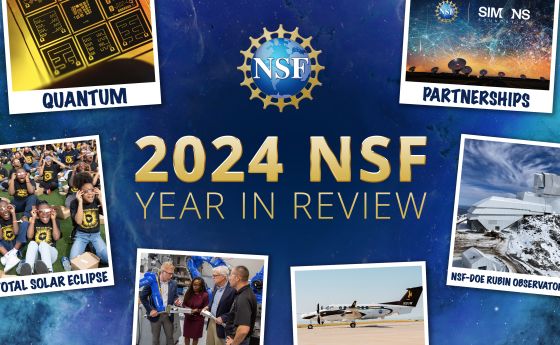
Expanding the geography of innovation to include all communities
In the following article, Dr. Sethuraman Panchanathan, 15th Director of the National Science Foundation, and Dr. Ellen Ochoa, outgoing chair of the National Science Board, outline why a robust network of scientific infrastructure is critical to an expanded “geography of innovation” as well as America’s future economic prosperity.
A stereotype of the digital age revolution is one of lone inventors tinkering away in their garage designing the first personal computer or launching a fledgling dot com retail site. The reality is that many figures at the center of these success stories had entire ecosystems of innovation around them, often from very early on, that gave them access to places and spaces to learn more about science, technology, engineering and math (STEM), and later to incubate their ideas and bring them to market.
Innovation incubators tended to be concentrated in a handful of areas across our country. But STEM talent can come from anywhere, and with the increasingly central role that STEM industries and jobs play in regional economic prosperity, every community should have a place where innovative ideas can flourish. As the National Science Board (NSB) noted in its Vision 2030 report, empowering American workers, entrepreneurs, and businesses will require strategically building science and engineering capacity and infrastructure across the nation and actively seeding and nurturing innovation clusters.
The U.S. National Science Foundation (NSF) has long supported cutting-edge laboratories, astrophysical observatories, supercomputing centers and more throughout the country. Trailblazing teams captured the first images of black holes, helped to quickly model the structure of the novel coronavirus and are currently advancing solutions to the biggest challenges in quantum computing and artificial intelligence. Research infrastructure is often the precursor to bringing greater value and impact to a community. For example, NSF’s National High Magnetic Field Laboratory, known as MagLab, has pioneered innovation in superconductor research. Its state-of-the-art facilities in Los Alamos, NM and Tallahassee, FL have seen discoveries that are the basis of hundreds of patents and that revolutionized healthcare by unlocking the technology that powers MRI diagnostics. It also has an outsized impact on local and regional communities. The Center for Economic Forecasting and Analysis at Florida State University reports that every $1 invested in MagLab leads to $6.44 of economic activity in the state of Florida. Its extensive education and outreach programs have inspired STEM wonder and curiosity in hundreds of thousands of visitors to its facilities and through school programs and internships. Continued research brings the promise of a next generation of smaller, more affordable superconducting magnets that can be deployed in many other communities.
NSF is working to expand the geography of innovation. Beyond the Established Program to Stimulate Competitive Research program, known as EPSCoR and designed to build capacity and infrastructure nationwide, NSF is forging partnerships to significantly increase its impact. For example, NSF has partnered with other federal agencies and companies to establish 18 National Artificial Intelligence Research Institutes since 2020, whose reach includes 40 states and the District of Columbia, with plans to expand into all 50 states. Another program, the Platform for Advanced Wireless Research, also referred to as PAWR, combines NSF funding with a consortium of 30 companies and associations to create four large-scale outdoor testbeds for wireless experimentation in Salt Lake City, Central Iowa, the Research Triangle in North Carolina, and New York City. Different techniques in each testbed are enabling exploration of new devices, communication techniques, networks, systems and services that will revolutionize the nation’s wireless ecosystem. Most exciting is that with the formation of NSF’s first new directorate in over 30 years, the Technology, Innovation and Partnerships directorate, NSF is poised to do much more to strengthen the country’s STEM facilities and capabilities in communities of all sizes throughout the country to better deliver benefits from research.
These actions are examples of what the NSB envisions in its roadmap for a thriving science and engineering enterprise in 2030. Two of those attributes are government, industry, and academic partners working together to realize national R&D priorities and accelerate the discovery-to-innovation cycle, and NSF continuing to drive U.S. innovation through fundamental research.
Stay tuned as NSF invests in your community to bring the future to your doorstep.
NSF would like to extend its deep appreciation and gratitude to Dr. Ochoa and her six years of dedicated service on the National Science Board, including her final year as Board Chair




